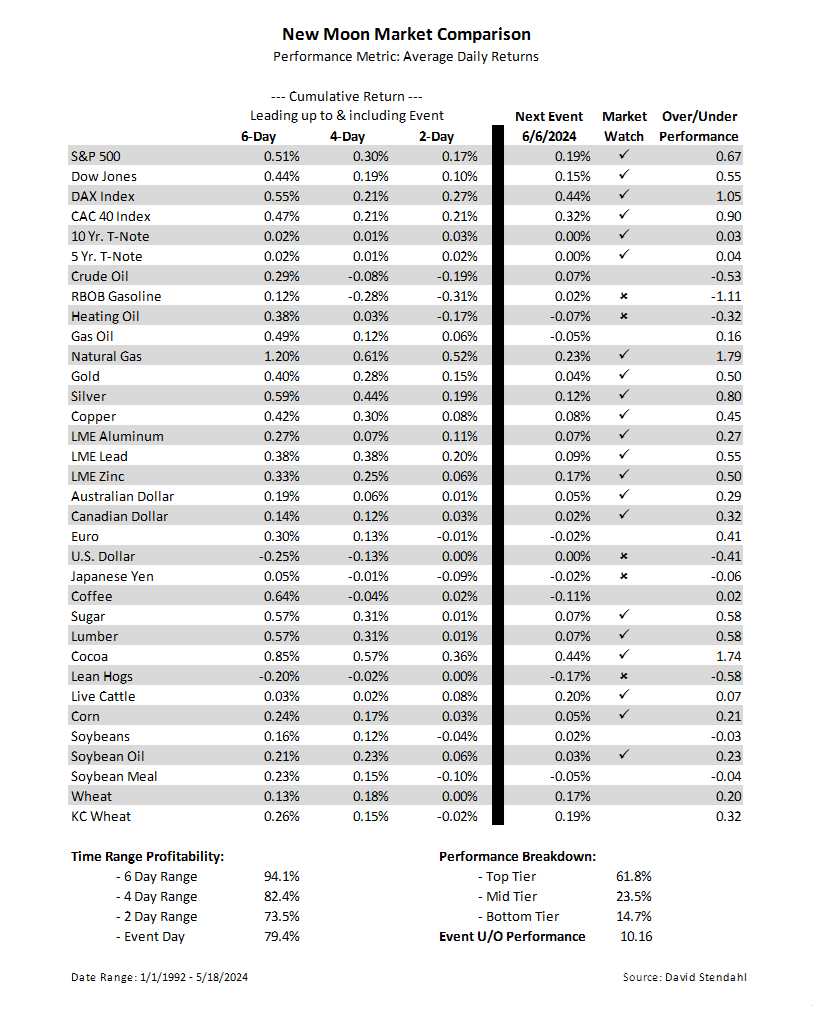Event: New Moon Phase
A new moon occurs when the sun and the moon are on the same side of the Earth. Because the sun is not facing the moon, from our perspective on Earth, it looks like the dark side of the moon is facing us. During a new moon, the gravitational pull of the Sun and Moon combine to create higher high and lower low tides than normal; called spring tides. Popular belief, for some, suggests that if the Moons close proximity to the Earth can alter tides, perhaps it can influence people and animals.
The question is … Do the markets perform better or worse heading into the dark of night when the new moon rises?
Market Comparision
How do the markets perform leading up to and including a new moon? The analysis table below breaks down each of the 30+ markets into four separate trading periods. These time frames span 6-days, 4-day, 2-days, and the event day itself. The return performance for each time frame is measured against its normal performance during the year to calculate a final over or underperformance return. This metric quantifies, in percentage points, the advantages or disadvantages associated with a new moon. Markets highlighted with a checkmark or an “x” should be closely monitored for potential strength or weakness heading into the event.
Trivia: When two new moons occur in a single calendar month, the second new moon is called a “Black Moon”.

Calendar Breakdown by Events
All trading involves risk. Leveraged trading has large potential rewards, but also large potential risk. You must be aware of the risks and be willing to accept them in order to invest in the futures and options markets. Don’t trade with money you can’t afford to lose. This is neither a solicitation nor an offer to Buy/Sell futures or options. No representation is being made that any account will or is likely to achieve profits or losses similar to those discussed. The past performance of any trading system or methodology is not necessarily indicative of future results.
Our strategies have not been developed based on knowledge of or with reference to your particular circumstances, such as financial position, goals, risk-reward preferences, tax situation, brokerage arrangement, investment or trading experience, and so forth. Hence no content or model published here constitutes a recommendation that any particular security, portfolio of securities, transaction, or investment strategy is suitable for any specific person. You alone are solely responsible for determining whether any investment, security or strategy, or any other product or service, is appropriate or suitable for you based on your investment objectives and personal financial situation. More
